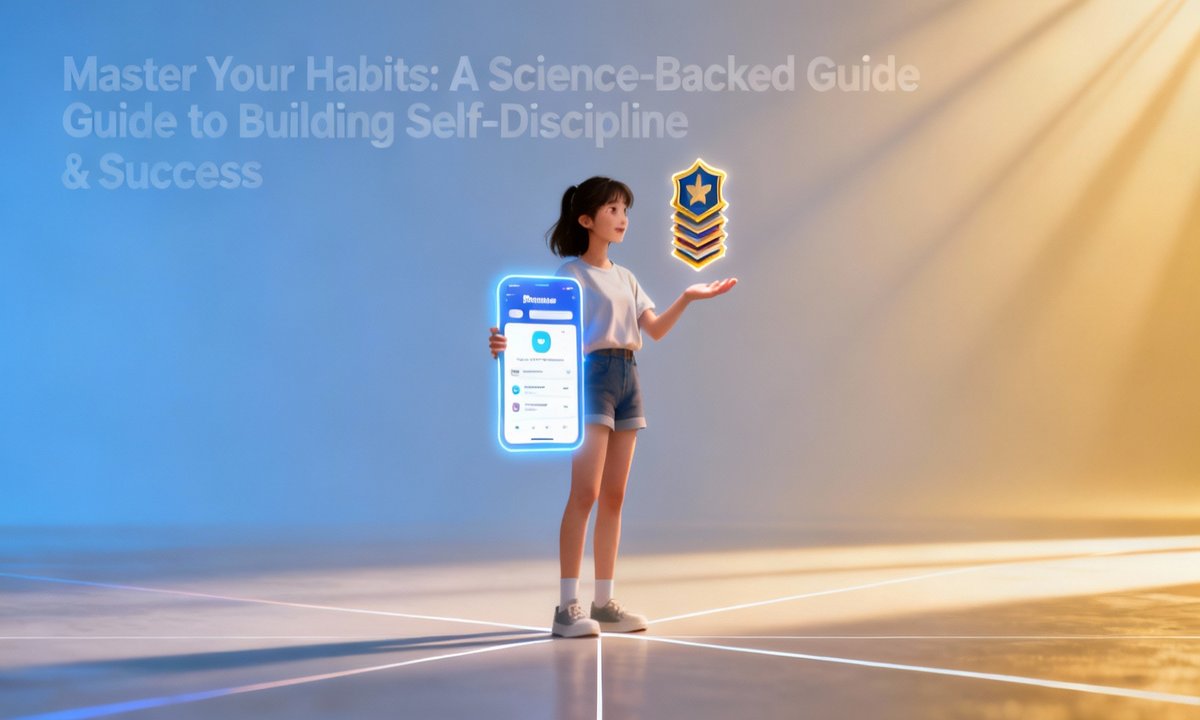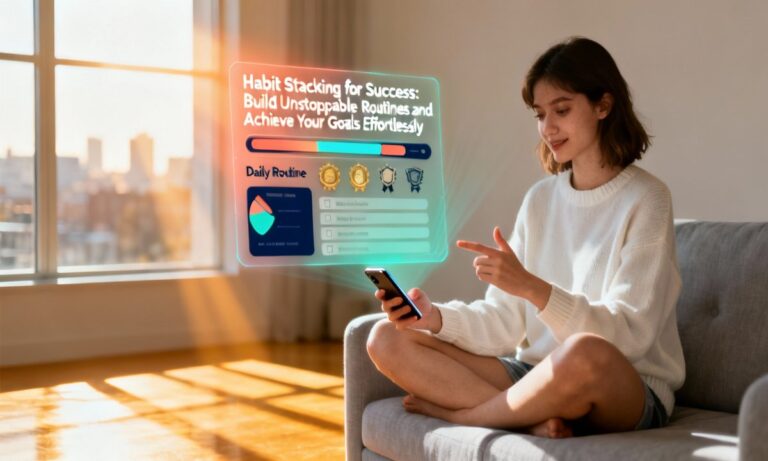Unlocking your highest level of self-discipline begins with mastering your habits. Backed by the latest behavioral psychology and neuroscience, this guide provides actionable strategies for forming life-changing routines, overcoming setbacks, and finally achieving lasting personal success. Whether you are striving for better productivity, improved finances, or mindful living, you can harness the science of habit building for positive change.
The Foundational Role of Habits in Personal Success
Habits shape who we are, acting as the invisible architecture behind our daily actions. Neuroscience demonstrates that brains “chunk” routine behaviors to conserve mental energy and work more efficiently. The real power emerges when you intentionally form and nurture science-backed habits.
Choosing good routines means you automate self-discipline, allowing your best actions to happen almost on autopilot.
By setting smart routines, you are not just avoiding poor choices; you are freeing valuable mental energy to focus on what matters most. Think of this as setting your brain’s default toward behaviors that support your long-term goals, making self-improvement second nature.
Understanding the Neuroscience of Habit Formation
Every habit, whether beneficial or detrimental, follows a distinct pattern known as the “habit loop.” This cycle involves three steps: a Cue, which triggers the behavior; the Routine, which is the action itself; and the Reward, which delivers a positive feeling, reinforcing the loop.
If you aspire to run daily, the cue might be laying out your running shoes. This leads to the routine of jogging, which then sparks a feeling of achievement—the reward. Understanding and leveraging these cycles allows you to efficiently and sustainably swap unhealthy patterns for positive ones.
Researchers have extensively modeled these loops in various frameworks, offering clear, step-by-step plans for utilizing atomic habits principles. Harnessing these cycles means you can efficiently swap unhealthy patterns for positive ones in a sustainable way.
Studies show that people who tackle change using simple, tiny routines found these behaviors became automatic, almost feeling “strange” not to complete them. [source] The secret to sustained change lies in making those initial steps effortless and rewarding.
This process solidifies new neural pathways until the desired habit becomes nearly impossible to ignore.
A Step-by-Step System for Building Better Routines
The Power of Tiny Habits and Effortless Action
To begin your journey of habit building and self-discipline at home, work, or school, start with research-backed strategies.
The most effective approach is to start small. Strip your new habit down to the simplest version—perhaps just one push-up or reading a single page.
Actions that require less than two minutes are easier to anchor, significantly lowering the barrier to starting and ensuring quick wins.
Designing Your Environment for Success
Environment cues are incredibly powerful motivators. You need to make the habit obvious. Place items where you are certain to see them, such as a book on your pillow or water on your desk.
You can also use a technique called habit stacking. This involves attaching a new habit to one you already do automatically. For example, immediately after brushing your teeth (existing habit), review your goals for the next day.
Increasing Appeal and Reducing Friction
To help make it attractive, bundle new habits with enjoyable activities. You could listen to an engaging audiobook during your daily walk or treat yourself to an uplifting playlist while organizing.
Next, make it easy by prepping in advance to reduce friction. If your goal is to eat healthier, chop vegetables ahead of time or batch-cook using effective meal prep habits.
Finally, make it satisfying by celebrating every step forward. Small wins, checklists, and tracking progress serve as essential rewards that reinforce new behavior patterns, making you look forward to the routine itself.
Essential Tools for Consistency and Tracking
Habits thrive on visibility and momentum. Consider using a simple habit tracker—this could be paper, an app, or a whiteboard. Visual streaks make your progress obvious and naturally strengthen your commitment.
Popular digital tools are available, but even a basic calendar with checkmarks works wonders. By tracking consistently, you build momentum and keep the habit loop spinning in your favor.
Shifting to Identity-Based Discipline
A crucial mindset shift for achieving lasting self-discipline is grounding your habits in your identity. Rather than saying, “I want to read more,” reframe it as, “I am a reader.”
This small linguistic shift internalizes the habit, prompting supportive choices naturally. When your actions align with your self-view, discipline feels less like a struggle and more like an authentic extension of who you are.
Strategies for Overcoming Roadblocks
Everyone faces obstacles—procrastination, motivation dips, or stress can throw routines off course. Behavioral psychology suggests anticipating these moments and proactively making a plan.
Use the “If-Then” strategy: “If I feel tired after work, then I will simply walk for 5 minutes, not skip exercise altogether.”
Breaking Unwanted Patterns
To modify undesired behaviors, begin by tracking when, where, and why the old habit occurs. The next step is to replace the negative routine with a positive one that is incompatible with the old habit.
For instance, you might swap mindlessly scrolling social media with journaling or meditating. Experts recommend rewarding yourself when you use the competing behavior, effectively reinforcing the positive change. [source]
Build friction for undesired habits by strategically removing cues or triggers from your environment. For healthy routines, make the right action only one step away.
If you aim to save money, design your day to include smart spending habits and cut down on impulse buying with evidence-based prompts. Small environmental changes often hold the most power.
Timeline, Persistence, and the Role of Motivation
Experts vary on the precise timeframe required to solidify a new routine. Research suggests it can take anywhere from a few weeks to several months, depending on the complexity of the behavior. [source]
Simple actions, like drinking water at lunch, become automatic faster than more involved habits, such as adopting a new fitness regime.
Consistency Over Perfection
Consistency, not perfection, is the ruling principle here. Missing a day is not the end of the world; it is the immediate return to your routine that cements long-term self-improvement.
Each repetition actively carves out habit pathways in your brain, making the desired behavior significantly easier over time.
Willpower Versus Habit
Discipline versus motivation: Which matters more? Science indicates that motivation helps you start, but self-discipline—anchored in strong habits—is what sees you through.
Since willpower is a limited resource, using established cues, routines, and rewards ensures your success is sustainable. Even on days when motivation is low, robust habit loops will keep you moving forward toward your goals.
Practical Applications of Habit Building
Automating Health and Nutrition
Nutrition is foundational to personal success. Start by implementing effective meal prep habits and mastering meal prep to ensure healthy options are always accessible.
Try batch-cooking recipes so your environment supports healthier decisions by default. Sticking with quick and healthy dinner routines and plant-based eating habits makes nutritious choices automatic.
Sustainable Living and Financial Discipline
For a meaningful shift toward sustainable living, consider adopting zero-waste habits in your kitchen and daily routines. Each repetition strengthens your commitment to a greener, more intentional lifestyle.
The same principle applies to financial savvy—small, daily changes matter more than one-off efforts. Develop energy-efficient routines and budget tracking habits to automate savings and reduce waste long-term.
The Neuroscience of Rewiring the Brain
Inside the brain, forming habits involves strengthening neural circuits, particularly in the basal ganglia. Each repetition actively “rewires” your brain, making actions like journaling more automatic.
Breaking habits requires intentional disruption—rerouting behavior with competing routines until the old, undesired pathway fades. [source] This process confirms why those initial small, repeatable steps hold so much significance.
Tools and Resources for Momentum
Powerful habit-building does not require luck; it simply requires the right support and tools. Consider the following resources to maintain consistency:
Digital Accountability Apps
Apps like Streaks, Habitica, and Fabulous send reminders, log progress, and gamify consistency. These digital helpers make progress visible and increase self-awareness and accountability.
Physical Trackers and Educational Materials
Paper habit trackers or digital spreadsheets serve to increase accountability. Explore recommended books or The Science of Habit: How to Rewire Your Brain for evidence-based strategies.
You can create or print out checklists and progress trackers. Keep these downloadables visible near your work or home space; they act as powerful cues to act and celebrate milestones reached.
Taking the Next Step in Your Habit Journey
Lasting change does not have to feel overwhelming. Start with one tiny habit—something that fits easily into your existing day.
Use reminders, social support, and progress trackers to keep building essential momentum. If one approach falters, simply tweak it and try again. Remember, self-discipline is a skill, not an inborn trait.
You can strengthen this skill with every single repetition.
Starting Your Automated Success
Ready to automate healthy eating? Check out mastering meal prep or build budget-friendly grocery habits for a positive financial foundation.
For energy efficiency and sustainability, discover smart energy-saving habits that benefit both your wallet and the environment.
Your crucial next step: Choose a new cue, download a habit tracker, and start your first habit this week. Share your journey with others to build accountability and inspire ongoing improvement toward personal success. For more tools and practical tips, explore our comprehensive frugal living guide.
Frequently Asked Questions (FAQ) About Science-Backed Habit Building
Q: How do I choose the right habit to start with?
A: Pick something meaningful but manageable—something that aligns with your values and takes less than two minutes to begin. Success grows when you see quick, easy wins.
Q: What if I miss a day or fall off track?
A: It is perfectly normal. Restart as soon as possible. Long-term success relies on consistency, not absolute perfection. Each restart is a step toward making your habit automatic.
Q: Are digital tools really effective for building habits?
A: Yes. Studies show visual trackers, reminders, and apps increase accountability and follow-through. Tools help anchor new routines within your daily environment.
Q: How can I make unwanted habits less tempting?
A: Remove environmental cues or triggers, reward competing positive behaviors, and seek social support. Over time, newly formed neural pathways will override the old, undesired actions.
—
Building self-discipline is within your reach—powered by the neuroscience of repetition, positive reinforcement, and simple, science-backed tweaks to your daily routine. Embrace the process and watch your path to personal and professional success unfold.



